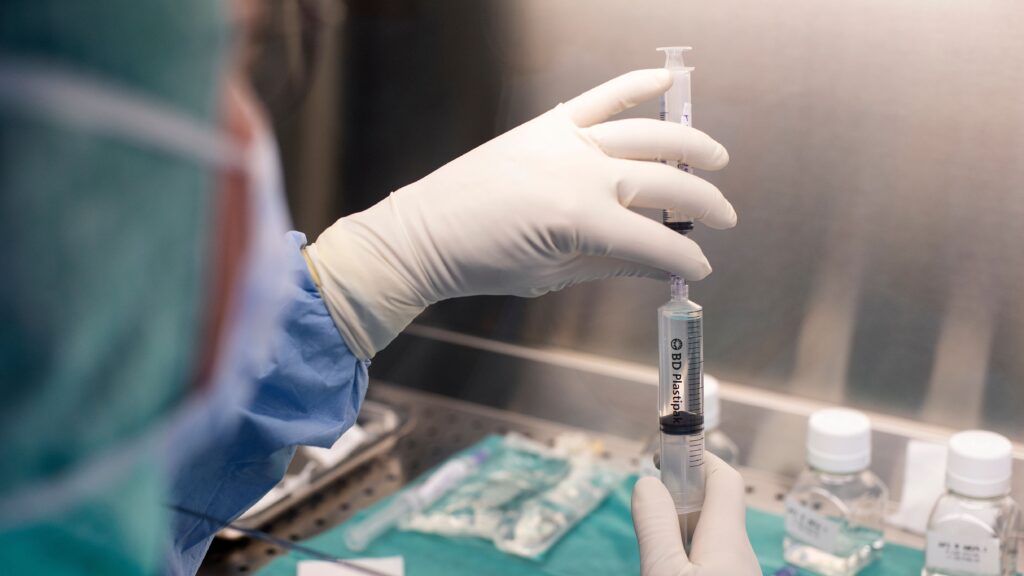My daughter, Mallory, died in 2017 at the age of 25 from a multiply resistant bacterial lung infection that followed a double-lung transplant necessitated by cystic fibrosis. In the weeks before her death, my wife, Diane Shader Smith, and I sought out and obtained an innovative yet underused treatment for antibiotic-resistant bacteria known as phage therapy. Her physicians administered the therapy, but it was too late to save Mallory’s life. An autopsy, though, confirmed that the phages had reached their target and had started to work.
Resistance of bacteria, fungi, and other microbes to drugs designed to keep them in check, collectively known as antimicrobial resistance, poses one of the gravest threats to global health today. With bacteria having developed resistance to most antibiotics, and a dwindling number of new antibiotics being developed, the world faces a future in which common infections are all but untreatable, and where routine surgeries become life-threatening. Against this bleak vision of the future, phage therapy offers a beacon of hope. For it to shine, though, the Food and Drug Administration must loosen its restrictions to facilitate the broader use of phage therapy in the United States.
advertisement
Bacteriophages, generally known as phages, are viruses that have evolved to attack bacteria. Phage therapy, the use of bacteriophages to target and destroy bacteria, is not a new idea. The foundation for it was laid by Félix d’Hérelle, a French-Canadian microbiologist who in 1917 co-discovered phages (with British bacteriologist Frederick Twort) and coined the term bacteriophage.
In the early- to mid-20th century, work on phage therapy was predominantly conducted in Poland and the former Soviet republic of Georgia. Interest in phage therapy declined in the west after the discovery and adoption of penicillin and other broad-spectrum chemical antibiotics, which seemed to offer a universal solution to bacterial infections.
Phages have several advantages over antibiotics. First, they have little or no unwanted side effects. Phages attach themselves to the bacterial cell membrane, which has an entirely different structure from animal cell membranes, so they are powerless to infect human cells. Second, they are highly specific, attacking only the targeted bacteria. That means phage therapy does not decimate an individual’s gut flora, sowing gastrointestinal distress, the way antibiotics do. These two advantages have led to a proven safety record.
advertisement
Equally important, phages can evolve faster than bacteria, enabling them to stay ahead of evolved resistance, which antibiotics cannot do.
Despite these benefits, and the fact that phage therapy has been widely used in Eastern Europe and the former Soviet Union for decades, its adoption in the United States has been stymied by stringent FDA regulations. Phage therapy is available in the U.S. only under the FDA’s expanded access (compassionate use) program, which is available to people with life-threatening conditions who have no other treatment options. This bureaucratic bottleneck limits the availability of a treatment that could save lives and alleviate the pressure on our dwindling arsenal of antibiotics.
To be sure, this caution is motivated by the need to ensure safety. But caution borders on cowardice when someone is near death. The FDA should adapt its regulatory framework to reflect the unique nature of phage therapy. Several steps can be taken to facilitate this shift.
First, the FDA should create a streamlined approval process specifically for phage therapy, which recognizes the differences between phages and traditional drugs. This could include adaptive trial designs that allow for faster iteration and adjustment based on real-world evidence.
Second, the FDA’s Good Manufacturing Practice standards should be relaxed in the context of producing phages for expanded access treatment of people near death. This would enable more labs to produce more phages more quickly. My daughter’s life might have been saved if the phages she needed had been more widely and rapidly available.
Third, funding and support for research into phage therapy should be expanded and academic and commercial partnerships encouraged to accelerate the development of safe and effective phage treatments.
Fourth, the government should work closely with international bodies and researchers to harmonize regulatory standards, ensuring that promising phage therapies developed abroad can be quickly assessed and adopted in the U.S.
Critics will argue that loosening regulations could compromise patient safety. However, the risks of inaction are far greater. Every year, at least 700,000 people worldwide die from drug-resistant infections, a number projected to rise to 10 million by 2050 if current trends continue. The potential benefits of phage therapy far outweigh the risks, particularly if regulatory changes are implemented thoughtfully and incrementally.
Mallory’s story continues to shine a light on antimicrobial resistance and help advance phage therapy. “Diary of a Dying Girl,” culled from the diary she kept for years, was published in May 2024. The same day, Mallory’s mother launched #GlobalAMRDiary, which aims to collect individuals’ stories about their experiences with antimicrobial resistance.
The fight against this threat cannot afford to overlook any viable solution. Phage therapy represents a powerful tool in the arsenal, one that has been neglected for far too long. By loosening restrictions and fostering a more flexible regulatory environment, the FDA can pave the way for a new era of innovative treatments. The stakes are high, and the time to act is now: the lives of millions of people depend on it.
Mark H. Smith is a real-estate finance lawyer in Los Angeles, California. He and his wife, Diane Shader Smith, are advocates for phage therapy and other advancements in the treatment of resistant bacterial infections.

